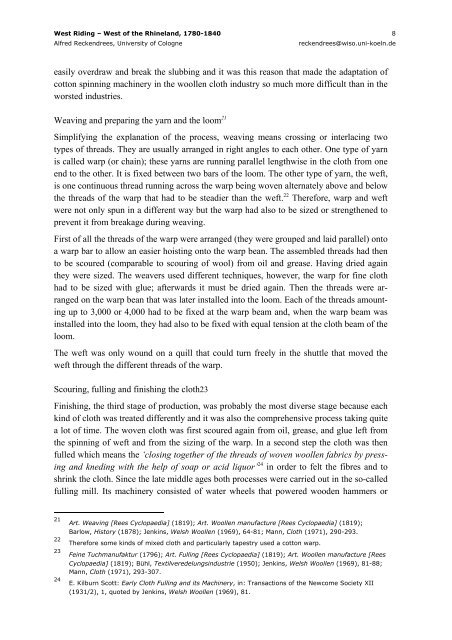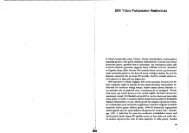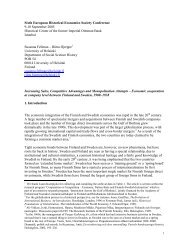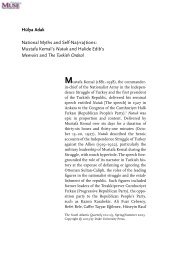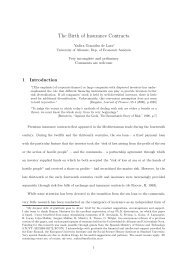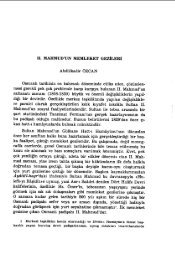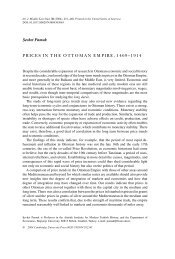West Riding – Western Rhineprovince, 1790-1840: Diverse Paths to ...
West Riding – Western Rhineprovince, 1790-1840: Diverse Paths to ...
West Riding – Western Rhineprovince, 1790-1840: Diverse Paths to ...
You also want an ePaper? Increase the reach of your titles
YUMPU automatically turns print PDFs into web optimized ePapers that Google loves.
<strong>West</strong> <strong>Riding</strong> <strong>–</strong> <strong>West</strong> of the Rhineland, 1780-<strong>1840</strong> 8<br />
Alfred Reckendrees, University of Cologne reckendrees@wiso.uni-koeln.de<br />
easily overdraw and break the slubbing and it was this reason that made the adaptation of<br />
cot<strong>to</strong>n spinning machinery in the woollen cloth industry so much more difficult than in the<br />
worsted industries.<br />
Weaving and preparing the yarn and the loom 21<br />
Simplifying the explanation of the process, weaving means crossing or interlacing two<br />
types of threads. They are usually arranged in right angles <strong>to</strong> each other. One type of yarn<br />
is called warp (or chain); these yarns are running parallel lengthwise in the cloth from one<br />
end <strong>to</strong> the other. It is fixed between two bars of the loom. The other type of yarn, the weft,<br />
is one continuous thread running across the warp being woven alternately above and below<br />
the threads of the warp that had <strong>to</strong> be steadier than the weft. 22 Therefore, warp and weft<br />
were not only spun in a different way but the warp had also <strong>to</strong> be sized or strengthened <strong>to</strong><br />
prevent it from breakage during weaving.<br />
First of all the threads of the warp were arranged (they were grouped and laid parallel) on<strong>to</strong><br />
a warp bar <strong>to</strong> allow an easier hoisting on<strong>to</strong> the warp bean. The assembled threads had then<br />
<strong>to</strong> be scoured (comparable <strong>to</strong> scouring of wool) from oil and grease. Having dried again<br />
they were sized. The weavers used different techniques, however, the warp for fine cloth<br />
had <strong>to</strong> be sized with glue; afterwards it must be dried again. Then the threads were arranged<br />
on the warp bean that was later installed in<strong>to</strong> the loom. Each of the threads amounting<br />
up <strong>to</strong> 3,000 or 4,000 had <strong>to</strong> be fixed at the warp beam and, when the warp beam was<br />
installed in<strong>to</strong> the loom, they had also <strong>to</strong> be fixed with equal tension at the cloth beam of the<br />
loom.<br />
The weft was only wound on a quill that could turn freely in the shuttle that moved the<br />
weft through the different threads of the warp.<br />
Scouring, fulling and finishing the cloth23<br />
Finishing, the third stage of production, was probably the most diverse stage because each<br />
kind of cloth was treated differently and it was also the comprehensive process taking quite<br />
a lot of time. The woven cloth was first scoured again from oil, grease, and glue left from<br />
the spinning of weft and from the sizing of the warp. In a second step the cloth was then<br />
fulled which means the ‘closing <strong>to</strong>gether of the threads of woven woollen fabrics by pressing<br />
and kneding with the help of soap or acid liquor’ 24 in order <strong>to</strong> felt the fibres and <strong>to</strong><br />
shrink the cloth. Since the late middle ages both processes were carried out in the so-called<br />
fulling mill. Its machinery consisted of water wheels that powered wooden hammers or<br />
21<br />
Art. Weaving [Rees Cyclopaedia] (1819); Art. Woollen manufacture [Rees Cyclopaedia] (1819);<br />
Barlow, His<strong>to</strong>ry (1878); Jenkins, Welsh Woollen (1969), 64-81; Mann, Cloth (1971), 290-293.<br />
22<br />
Therefore some kinds of mixed cloth and particularly tapestry used a cot<strong>to</strong>n warp.<br />
23<br />
Feine Tuchmanufaktur (1796); Art. Fulling [Rees Cyclopaedia] (1819); Art. Woollen manufacture [Rees<br />
Cyclopaedia] (1819); Bühl, Textilveredelungsindustrie (1950); Jenkins, Welsh Woollen (1969), 81-88;<br />
Mann, Cloth (1971), 293-307.<br />
24<br />
E. Kilburn Scott: Early Cloth Fulling and its Machinery, in: Transactions of the Newcome Society XII<br />
(1931/2), 1, quoted by Jenkins, Welsh Woollen (1969), 81.


